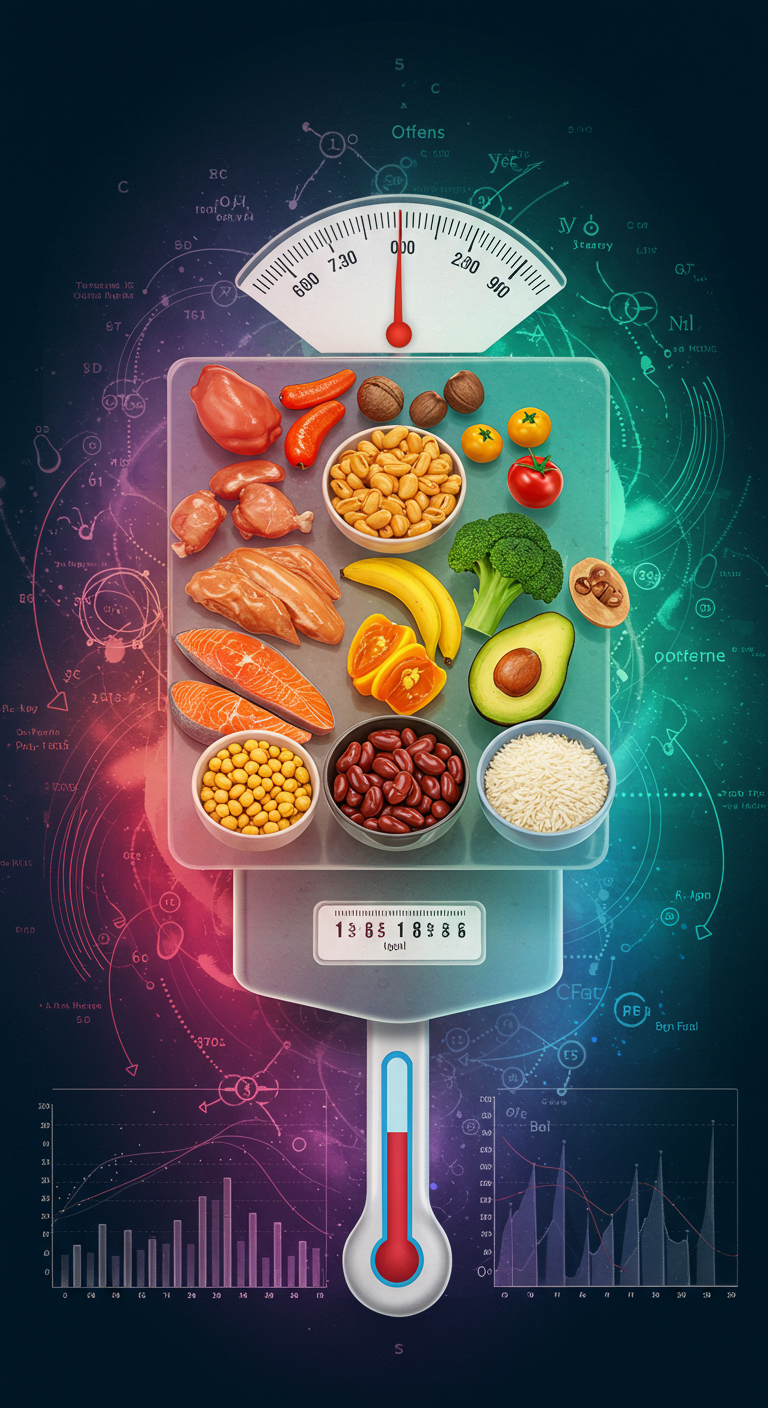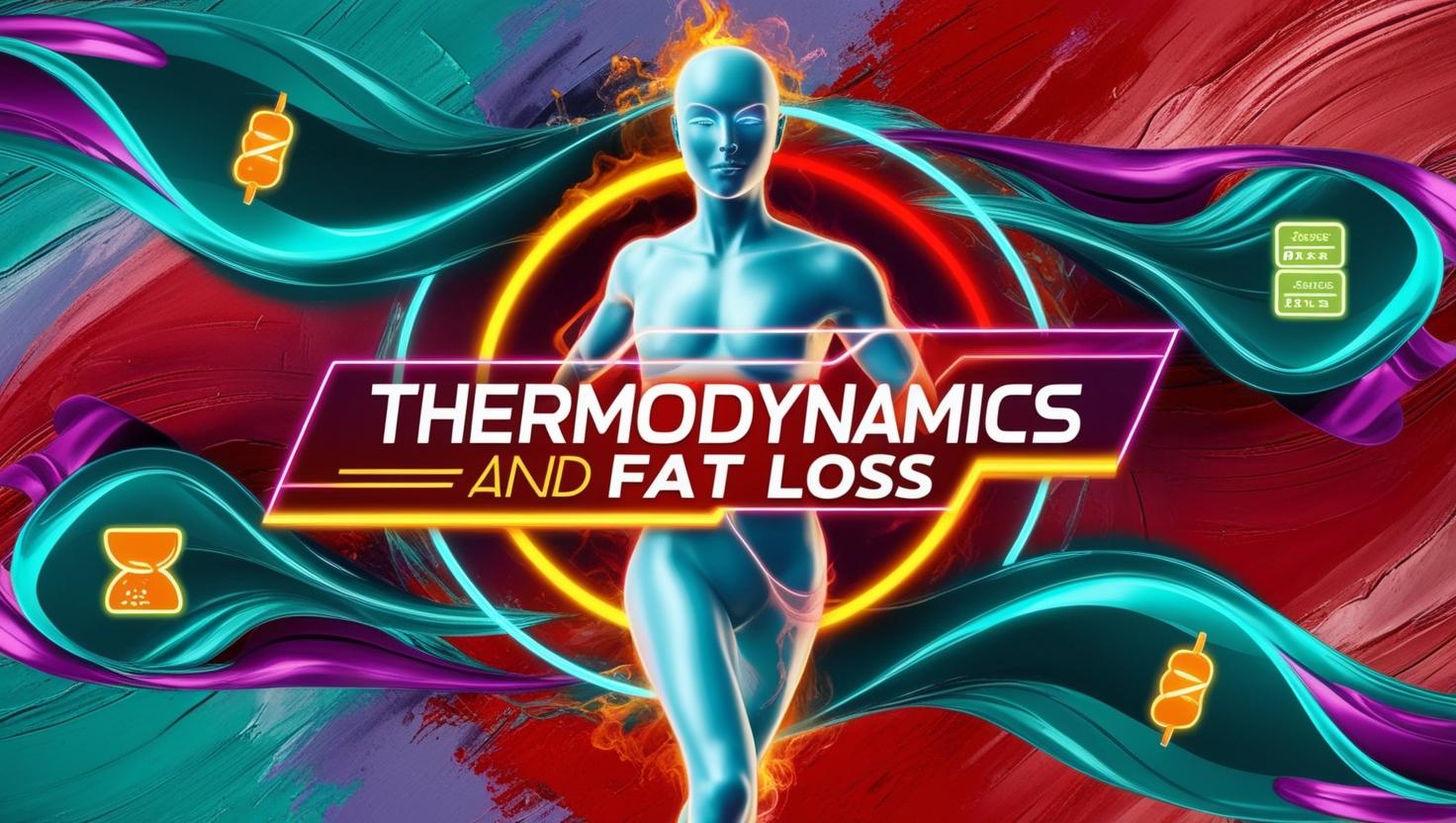Thermodynamics and Fat Loss
Did you know the body can burn almost the same energy from fats or carbohydrates? This fact shows the complex relationship between thermodynamics and fat loss. While many believe eating fewer calories is key to losing weight, it’s not that simple.
It’s important to understand how we use energy in relation to food. Thermodynamics isn’t just for physics; it affects our bodies too. The rules of energy, explained by the First and Second Laws of Thermodynamics, are central to our body’s use of nutrients.
In this article, we’ll make sense of energy use, metabolic benefits, and the effects of different nutrients with a fun tone. We’ll show why knowing about thermodynamic principles matters for losing fat. For more info, check out Nutrition and Metabolism.

Understanding Thermodynamics and Fat Loss in the Context of Nutrition
To understand how thermodynamics ties into nutrition, we need to look at the thermodynamics laws. These laws are key to how energy works in our bodies. They affect everything we eat and how our bodies process food.
The First and Second Laws of Thermodynamics
The First Law of Thermodynamics tells us energy can’t be made or destroyed, only changed. It’s like a game where energy hides and shifts but never goes away. In nutrition, this means our bodies change the energy in food for different uses. The Second Law shows that when energy changes form, some is lost as heat. Regarding nutrition, this means we must understand entropy and its role in our body’s energy balance.
How Thermodynamics and Fat Loss Relates to Biological Systems
Biological systems are open systems. They take in energy from food and get rid of waste. This exchange is crucial for keeping energy levels balanced. Energy flow gets disrupted during metabolism, highlighting the body’s complexity. For example, carbs and proteins give around 4 calories per gram, fats give about 9 calories per gram. This shows how thermodynamics is key in choosing what to eat.
Through evolution, our bodies learned to save energy, especially by turning extra calories into fat for lean times. This shows the deep link between diet and thermodynamic rules. For more on this topic, check this informative article.
Calories and Energy Conservation: The First Law of Thermodynamics
Understanding energy balance is key to managing weight effectively. It’s based on the First Law of Thermodynamics. This law tells us that we can’t make or destroy energy, only change its form. So, if you eat more calories than you burn, gaining weight is a sure thing. Eat less, and you’ll likely lose weight.
Defining Energy Balance and Its Implications
Energy balance matters when we look at weight changes. Let’s say someone eats 2,500 calories a day. That’s their body’s fuel for things like breathing and digestion. If they burn less than they eat, they’ll gain weight. Keeping intake and burn balanced is like walking a tightrope. Lean too much one way, and you’ll see the scale move.
The Misconception of “A Calorie is a Calorie”
There’s a myth that all calories are the same. But that’s too simple. The truth is, different foods affect our bodies in their own ways. For example, proteins, fats, and carbs have similar calorie counts but don’t act the same inside us. Diets lower in carbs might help you lose more fat than diets with the same calories but more carbs.
Metabolic Advantage: Does Thermodynamics Support It?
The idea of a metabolic advantage is a hot topic in diet talks, especially with low-carb foods. These diets argue that calories work differently in our bodies. It’s about how well we turn food into energy.
Exploring the Concept of Metabolic Efficiency
How well our metabolism works affects how much energy we use. This plays a big role in losing weight. Studies show low-carb diets often have a metabolic edge over diets that have the same calories but are low in fat.
In these studies, low-carb eaters often lose more weight than those on a low-fat diet with the same calories. One study found the low-carb group lost about 23 lbs on average. Even when they ate more calories, they still lost up to 20 lbs. This suggests our bodies can process fats in ways that challenge old ideas about calories.
Isocaloric Diets and Weight Loss Outcomes
Research keeps showing that diets with the same calories can lead to different weight loss results. Thinking all calories are the same oversimplifies how our bodies work. It ignores how not all calories are used the same way by our bodies.
Low carb diets are better at helping people lose more weight per calorie. This supports the idea that our bodies handle different foods in unique ways. Critics say this goes against basic science rules. But, really, it highlights how diet types can change our metabolism. For more on how this works, you can look at this discussion on thermodynamics and weight loss.

Thermodynamics and Different Macronutrients
Understanding how our body uses different macronutrients is key to managing weight. Carbohydrates, fats, and proteins each have their own effect on our energy and how we burn fuel. These nutrients influence how we process food and how hungry we feel, affecting our weight management efforts.
Understanding the Role of Carbohydrates, Fats, and Proteins
Carbs usually give us a quick energy boost. But they can make our blood sugar levels spike, then drop. This might make us hungry again sooner, leading to eating more. Fats, however, release energy slowly. They help us absorb important vitamins and don’t burn as many calories during digestion.
Proteins are different. They not only repair our bodies but also burn more energy to digest. Eating foods high in protein can increase our daily calorie burn. High-protein diets make us feel full longer, helping to cut down on snacking and supporting weight loss.
The Impact of Macronutrient Composition on Weight Change
The mix of macronutrients in our diet has a big effect on weight change. A balanced diet helps with energy management. Yet, diets with more protein are better for losing weight. They can make our metabolism work better and help maintain muscle while losing weight.
It’s good to eat at least 1.8g of protein for every kg of body weight to keep energy levels balanced. Changing the mix of macronutrients in our diet should match our goals and how we live. Studies show that watching calories is key for losing weight quickly. But, for keeping weight off long-term, it takes more than just counting calories.

Heat Transfer and Its Role in Metabolism
Heat transfer tells us a lot about metabolism. Our bodies always work on managing energy. They create heat as we burn calories which is crucial in keeping our temperature and metabolic rate in check.
The Generation of Heat During Energy Expenditure
When we move or exercise, our bodies generate heat. This shows thermodynamics in real life. Generating heat through exercise or eating shows a vital example of heat transfer. Energy shifts occur in several ways:
- Conduction: Heat moves from hotter to cooler areas through direct contact between atoms.
- Convection: This involves fluids moving to spread heat via the fluid’s motion.
- Radiation: Heat is sent as waves, allowing energy transfer without touching.
These mechanisms help our bodies manage energy effectively. They ensure we function well. The first law of thermodynamics helps us understand energy’s role in our metabolism, including fat loss.
Thermogenesis: How Temperature Influences Caloric Burn
Temperature has a big impact on how many calories we burn. Thermogenesis can be triggered by cold environments or spicy foods. Foods high in spices can up our metabolic rate and help us manage our weight.
Studying heat transfer reveals more about our caloric needs. The success of weight management can depend on many things. These include our metabolism and where we are. Understanding these factors helps us choose better diets and lifestyles for fat loss.
Entropy in Biological Processes and Its Relevance to Fat Loss
The concept of entropy shows a key truth about our biology: systems get more disorganized over time. Our bodies deal with energy changes, but these are never 100% efficient. Recognizing this is key when looking at fat loss. Each time we process food, some energy is lost as heat. This fact makes managing weight more complex.
Things like age, gender, and how much muscle we have influence our Basal Metabolic Rate (BMR). These differences mean that people burn nutrients at varying rates affecting our Thermodynamics and Fat Loss. For some, burning calories is easy. For others, it seems much harder. However, building more muscle through strength training can boost BMR. This improvement helps with managing your energy better.
We must remember that living beings exchange matter and energy with their environment. Our metabolism involves breaking down molecules for energy and building up for growth and repair. By understanding entropy, we see the complex nature of weight management. It emphasizes the need for a well-rounded approach. This includes eating well, staying active, being mindful of eating habits, and considering lifestyle elements like sleep and hormones.
